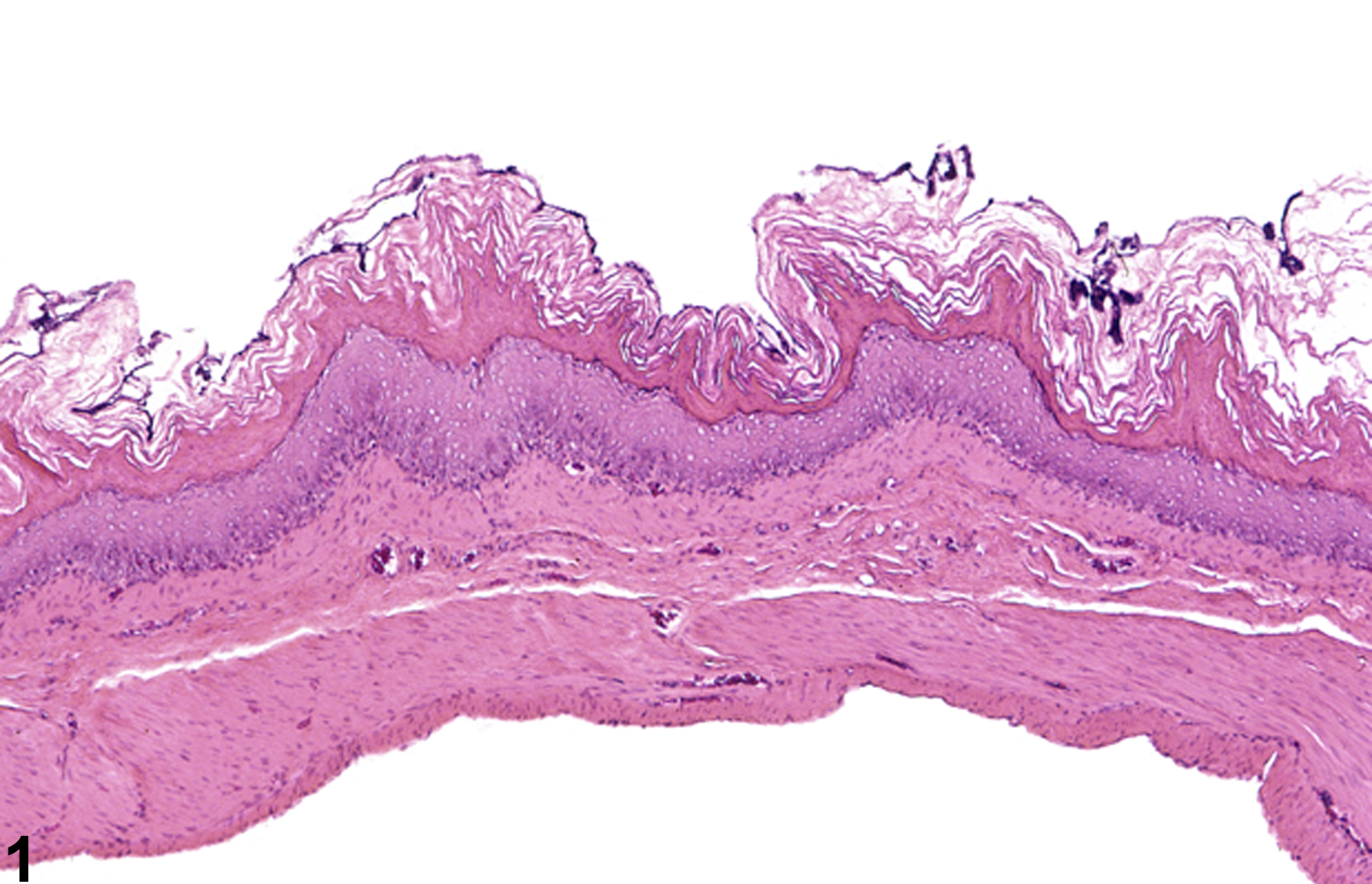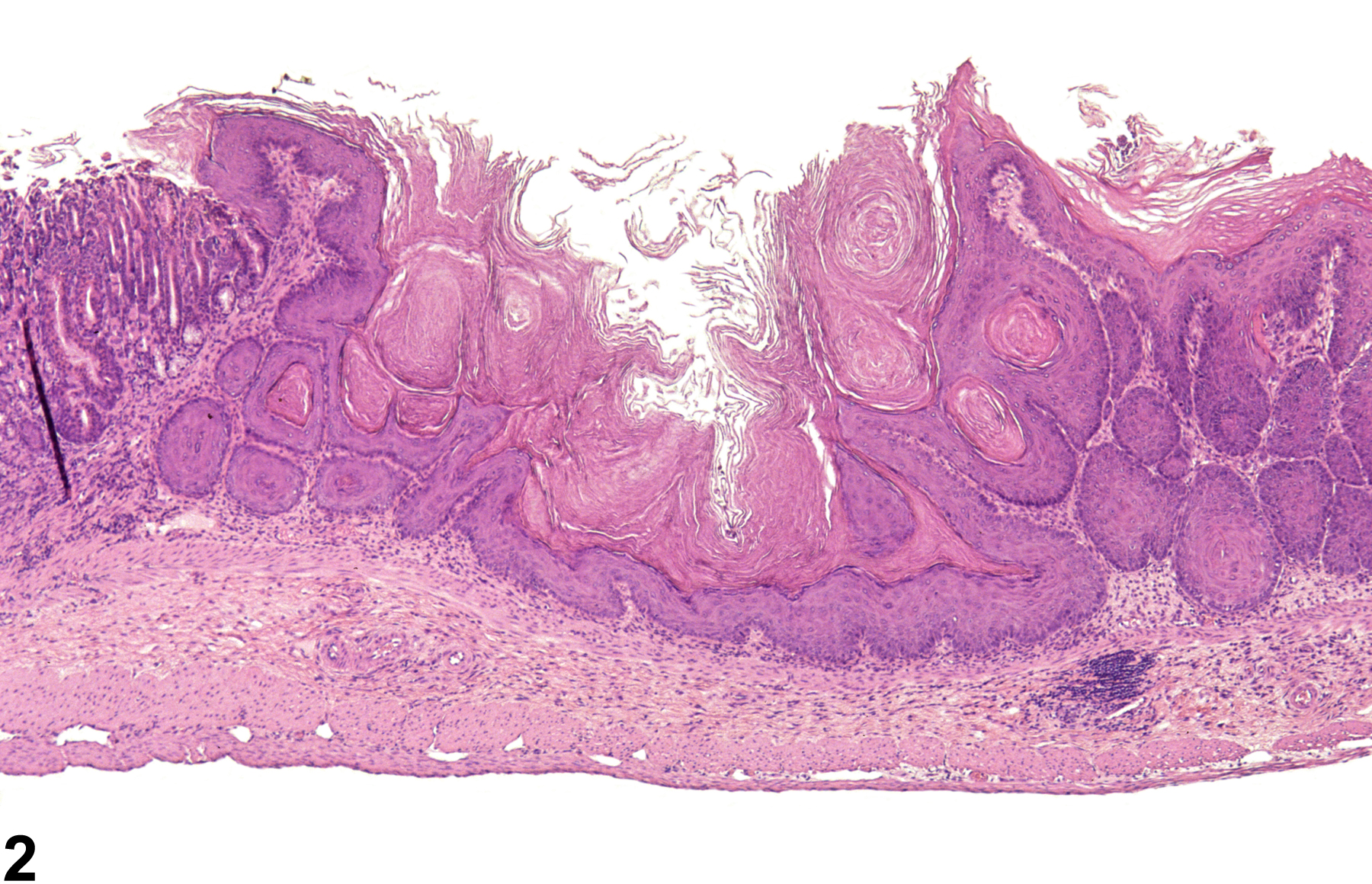Alimentary System
Stomach, Forestomach - Hyperkeratosis
Narrative
Frantz JD, Betton GR, Cartwright ME, Crissman JW, Macklin AW, Maronpot RR. 1991. Proliferative lesions of the non-glandular and glandular stomach in rats. GI-3. In Guides for Toxicologic Pathology. STP/ARP/AFIP, Washington, DC, 1-20.
Full Text: https://www.toxpath.org/docs/SSNDC/StomachProliferativeRat.pdfHargis AM, Ginn PE. 2007. The integument. In: Pathologic Basis of Veterinary Disease, 4th ed (McGavin MD, Zachary JF, ed). Mosby, St Louis, MO, 1107-1261.
National Toxicology Program. 1996. NTP TR-383. Toxicology and Carcinogenesis Studies of 1-Amino-2,4-dibromoanthraquinone (CAS No. 81-49-2) in F344/N Rats and B6C3F1 Mice (Feed Studies). NTP, Research Triangle Park, NC.
Abstract: https://ntp.niehs.nih.gov/go/11305
Stomach, Forestomach - Hyperkeratosis in a male F344/N rat from a subchronic study. A thickened keratin layer in the forestomach associated with epithelial hyperplasia.



